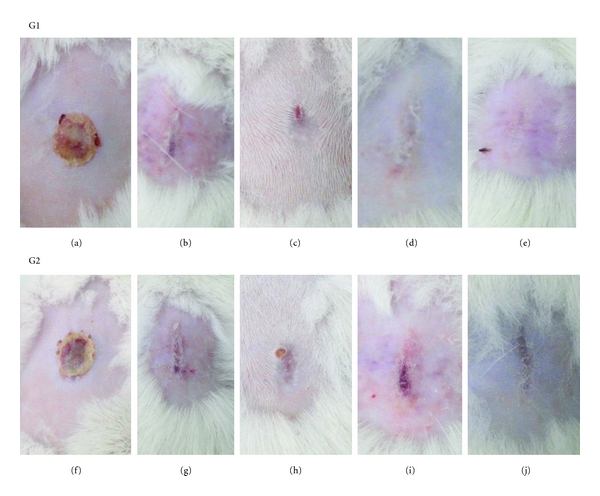Figure 3.

Clinical evaluation of second-degree burn healing in Wistar male rats. G1: experimental group treated with hydrogel containing isolectin Cramoll 1,4 at 100 μg/mL. (a) Thermal lesion aspect after 7 days: macroscopically shows thin and dry crust with detachment of edges. (b) Thermal lesion aspect after 14 days of treatment: absence of crust and the presence of scar tissue. (c) Thermal lesion aspect after 21 days of treatment: presence of scar tissue and a small detachment point of the crust. (d) Thermal lesion aspect after 28 days of treatment: presence of scar tissue only. (e) Thermal lesion aspect after 35 days of treatment: view of a discrete scar tissue. G2: control group treated by topical application of hydrogel excipient. (f) Thermal lesion aspect in control animals after 7 days: view of thin and dry crust with detachment of edges. (g) Thermal lesion aspect in control animals after 14 days: absence of crust and the presence of scar tissue. (h) Thermal lesion aspect in control animals after 21 days: presence of scar tissue, with the point of detachment of the crust. (i) Thermal lesion aspect in control animals after 28 days: presence of scar tissue and a second crust. (j) Thermal lesion aspect in control animals after 35 days: view of scar tissue.
